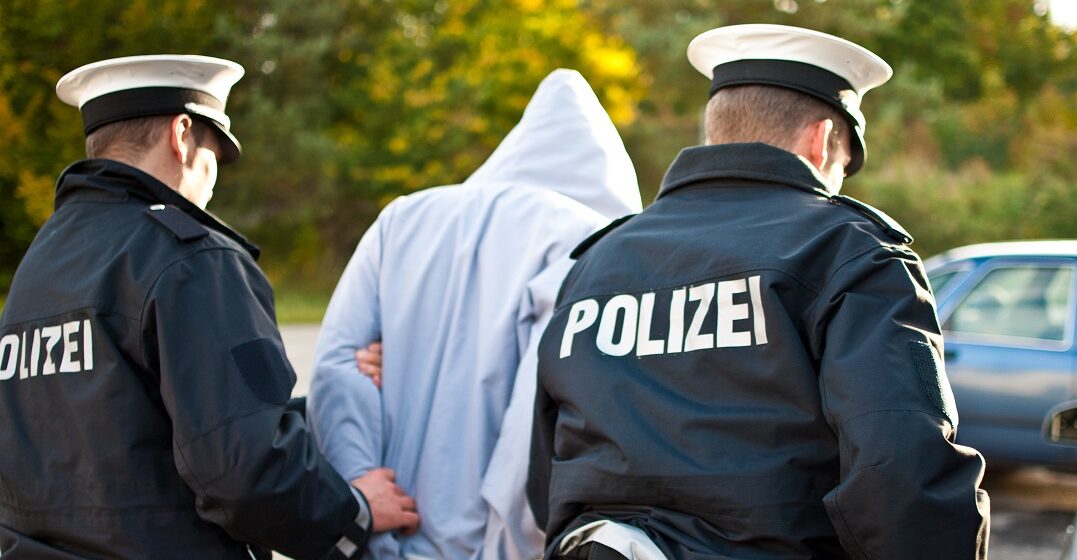Published on May 3, 2023

Crime rates in Germany: Europe’s safest country?

Germans have a reputation for following the rules, whether that means waiting for the green light to cross the street or being punctual for any given appointment. In light of this enduring stereotype, you might expect relatively low crime rates in Germany. After all, who would dare to commit a crime in such a tight-laced country?
While the stereotype may not be completely fair or accurate, Germany is surely one of the safest countries in the world. Indeed, rates of violent crime, theft and corruption are quite low! Here is a quick introduction to crime in Germany, from where it most commonly occurs to what you might want to look out for.
Violent crime is very uncommon in Germany, so you can feel safe walking the streets of almost any German city — so long as you take some basic precautions. In terms of crime in general, Germany compares favorably to many of its Western European neighbors. According to national police crime statistics in 2021, there were nearly 5,200 crimes per 100,000 inhabitants.
To get a better sense of what that actually means, let’s look at the “crime index” — a statistic that estimates the overall level of crime in an area on a scale of 0 (no crime) to 100 (utter mayhem). According to 2022 figures, Germany’s crime index score is 36.4. This is lower than the scores clocked in France (52.4), the United Kingdom (46.5) and Italy (45.2), but higher than the scores in Spain (33.9), the Netherlands (27.9) and Denmark (26.6).
According to World Bank statistics, Germany’s murder rate in 2020 was about 1 per 100,000 people. You might attribute that low number to the Covid-19 pandemic, but the German murder rate has remained fairly steady for the last decade. The murder rate in France and the United Kingdom is marginally higher, while the rate in Italy and the Netherlands is slightly lower. The differences are pretty minimal, though; all of these countries have a murder rate of around 1 per 100,000 heads of population.
In recent history, Germany’s murder rate peaked in 1997 at 2.5 deliberate homicides per 100,000 people — still a very low figure compared to much of the rest of the world. TheUnited States murder rate, for example, was 7 per 100,000 people in 2020.
Based on survey data assessing how strongly respondents report feeling a sense of safety, anxieties about personal security in Germany are quite average for Europe. Germans report a higher sense of security than most of Western Europe, though it’s somewhat lower than that of Germany’s eastern neighbors.
A leading cause of accidental death in Germany, as in most countries, is traffic fatalities. About four deaths are caused by road traffic injuries per 100,000 people. This figure has been falling year-upon-year as car safety measures improve and many Germans switch to public transport, cycling or walking. Still, it remains a leading threat to personal safety in Germany.
The most common crimes committed in Germany fortunately do not often involve fatalities.
The most frequent criminal incidents are theft (including pickpocketing and burglary) and vehicular crimes (including car theft, vandalism and arson). Berlin protesters do have a special reputation for setting cars on fire, but that hasn’t been a major issue for some time now.
The last few years have seen a rise in the prosecution of white collar crime in Germany, which was long overdue. Tax evasion, fraud and money laundering remain major problems, but increased public scrutiny is certainly a step in the right direction.
Corruption is thankfully very low in Germany, even as some recent scandals have tarnished that reputation. Nevertheless, according to Transparency International’s Corruption Perceptions Index, Germany ranked ninth in the world in terms of low public-sector corruption.
In general, cities tend to be more affected by crime than rural areas. There are many factors that cause this, including population density and urban poverty. This situation is the case in Germany as well, but there is also a clear north-south divide in crime rates.
Southern regions have, in general, far less crime than the north. Berlin, Frankfurt am Main, Bremen and Hamburg have the highest rates of crime of all German cities. Crime rates in these cities are in some part driven up by the presence of organized crime syndicates involved in drug trafficking, money laundering, extortion, sex trafficking and weapons trafficking. Unfortunately, all of these criminal enterprises tend to thrive in underprivileged urban communities.
Meanwhile, southern cities like Munich experience much lower crime rates, though locals warn that Oktoberfest and the excessive beer drinking associated with it drives up the rate of general havoc!
All in all, Germany is a very safe country with low rates of violent crime. While stories of murder and mayhem grab the headlines, there is little to fear on Germany’s streets so long as you avoid getting involved with the wrong groups and cross the street safely! As in every country, it is wise to go out at night with a group rather than alone, and to avoid taking shortcuts through parks at night.